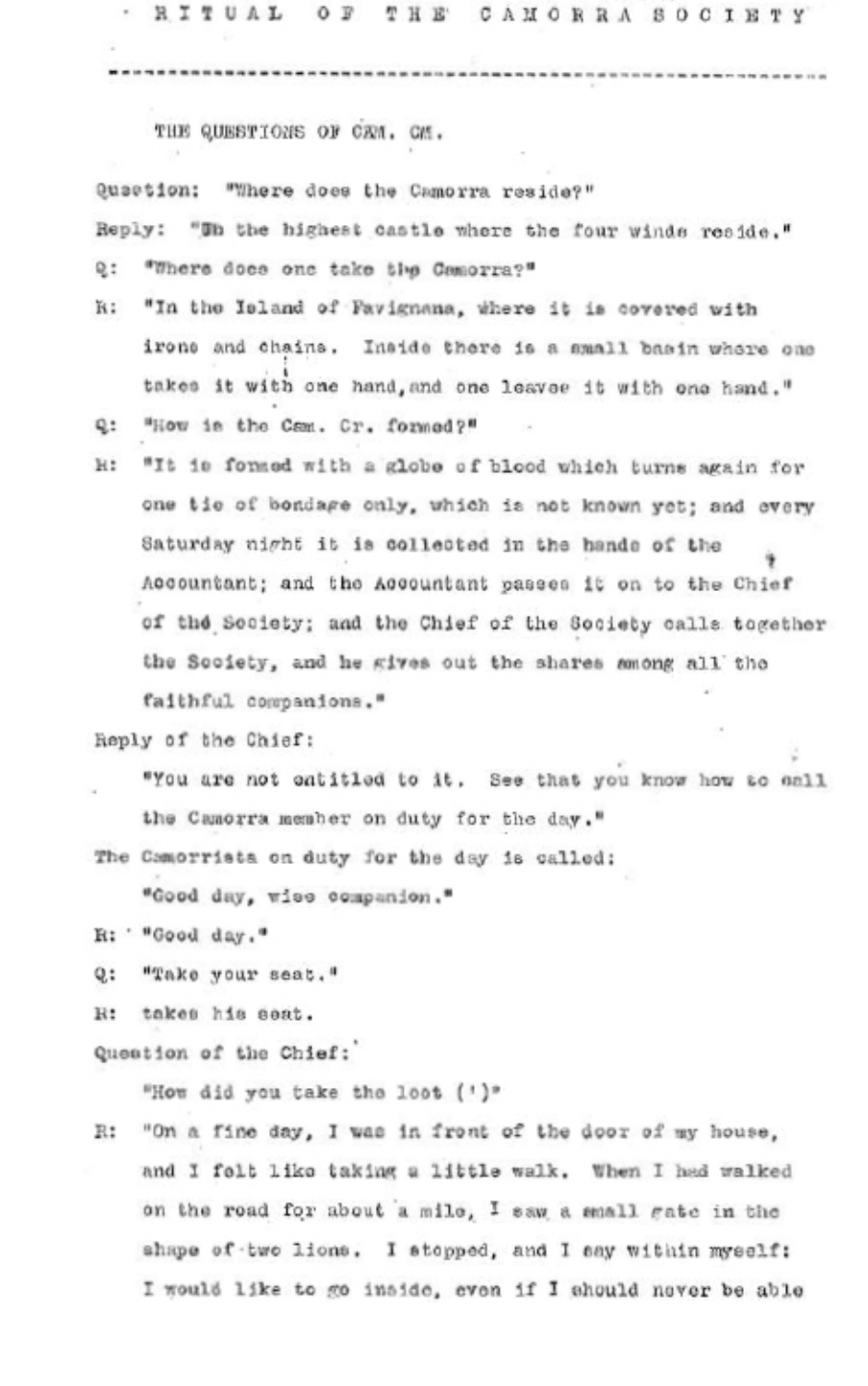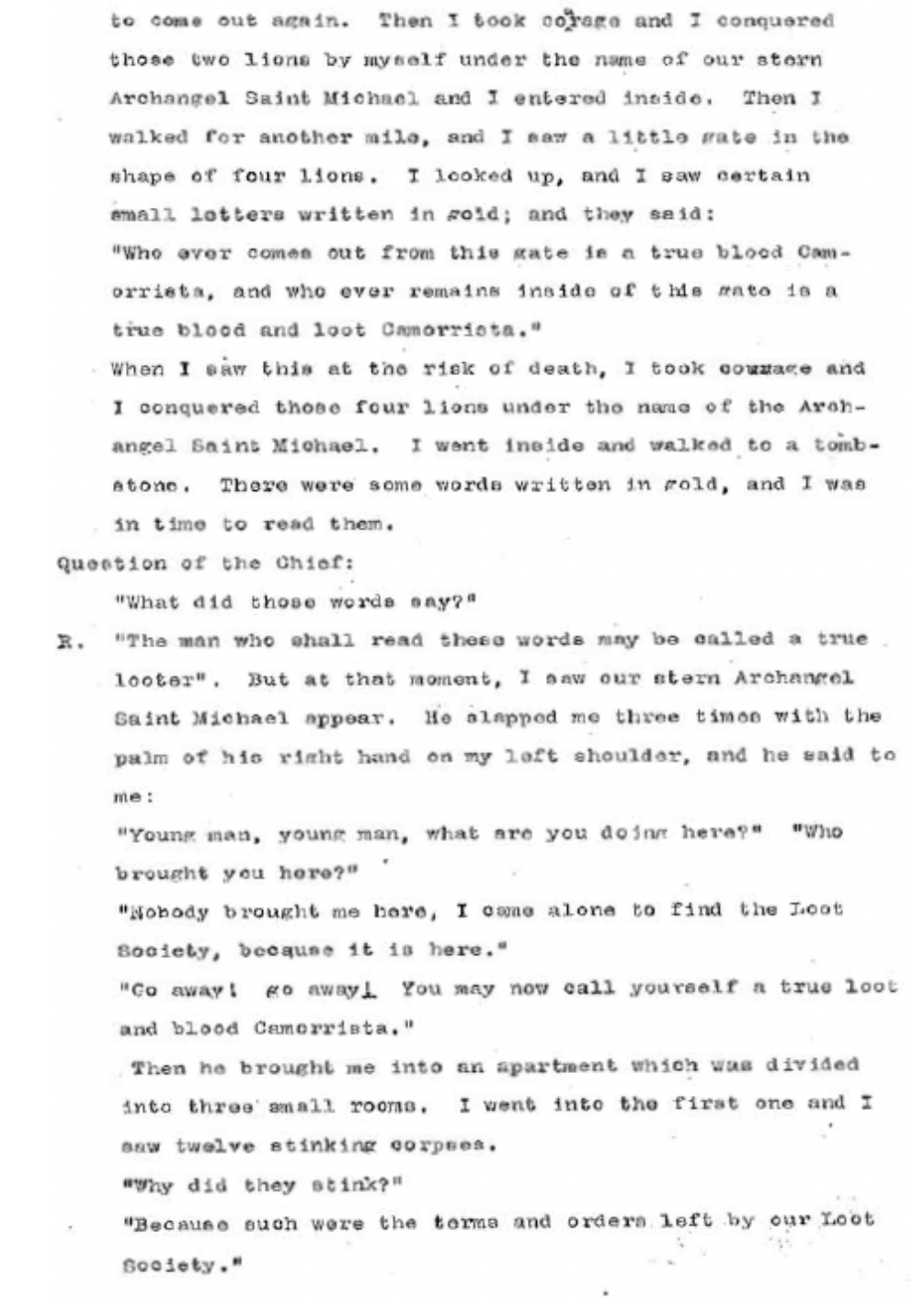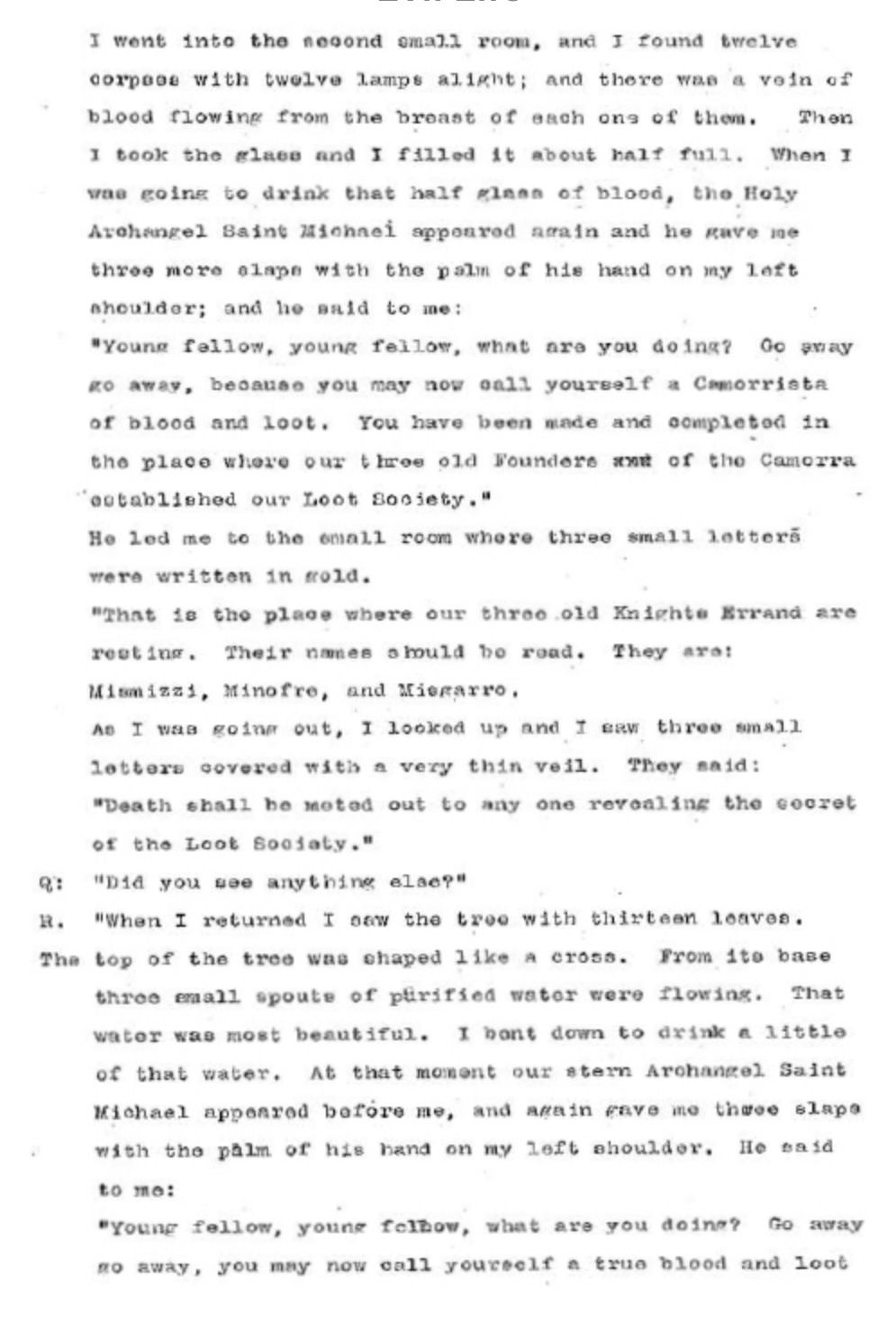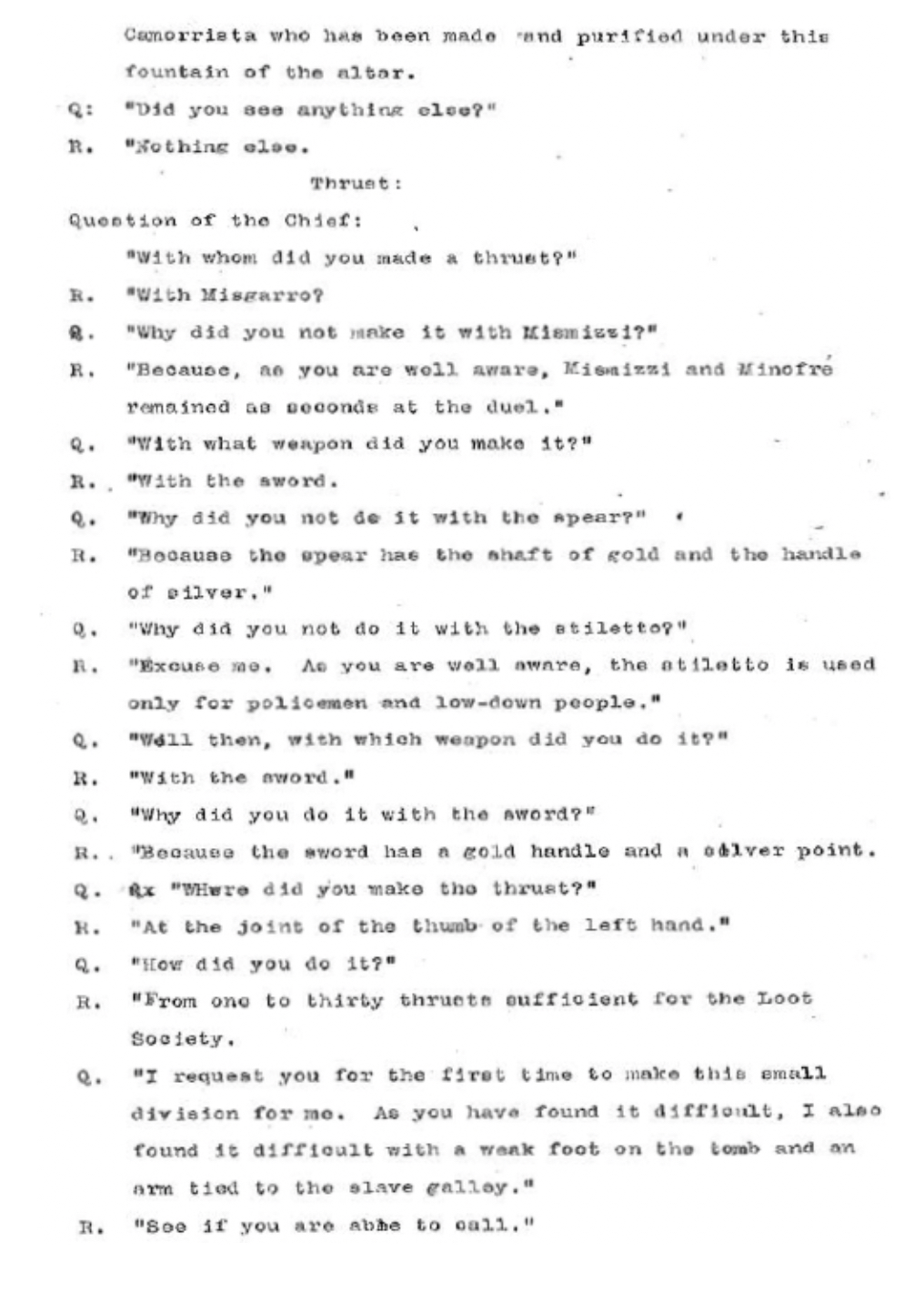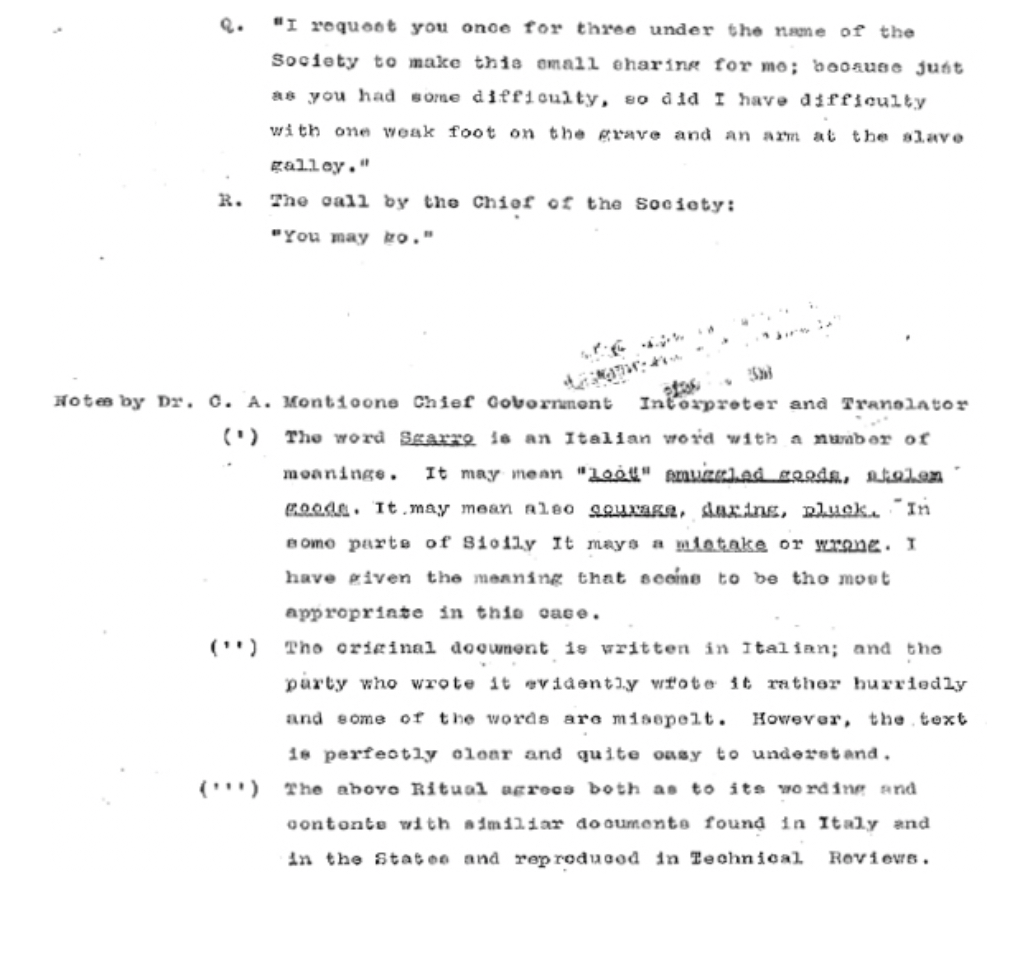This stands out because the Trabbiesi, unlike the Messinese, have a long documentation, as do the Limas, with Mafia. We have ample evidence of cammoristi becoming mafiosi but this, mafiosi going camorristi is the first and relatively few examples we have. Eric found an example from 1970 but these are the only two I can think of. Also the documents the Bananas were found with are exactly the same, verbatim, as those found in Sewickley on people from Gizzeria.PolackTony wrote: ↑Fri Feb 16, 2024 6:46 pmYes. Given these intersections between Calabresi and Trabbiesi in PA and Western NY, we should reconsider also the “Society of the Banana and Faithful Friends” in OH. This group would seem to be opaque and confusing — what looks like a Camorra/“Black Hand” Society led by and composed of Sicilians, mainly from the mafia hotbed area around Trabìa and Tèrmini Imerese (as you’ve discussed before, the Limas themselves had a mafia lineage going back to Trabìa). As a reminder, an LE raid executed in 1909, investigating a ring of “black hand” extortionists, on the Limas’ home in Marion, OH, in 1909, found a book of rules, like a constitution, similar or identical to those recovered from Camorristi in both Italy and the US, secreted in a safe and including pages denoting the membership and ranks of the “Society of the Banana”. This book specified punishments for infractions including death and wounding by knife, again like the Camorra, and established protocol for meetings and interactions with other branches of the Society. Interestingly, one of these rules specified that a member who travelled to an area under the jurisdiction of another branch must inform the heads of the “local” of that area of his trip and how long he would be staying (on pain of a knife attack if he failed to do so, naturally). This of course immediately brings to mind the “locali” of the ‘Ndrangheta.B. wrote: ↑Fri Feb 16, 2024 4:00 pm There was also a Dominick Musolino killed in Buffalo in 1912 and Francesco Rangatore from Trabia was a witness, a likely relative of future Buffalo member Sam Rangatore who was originally from the Trabia colony in Johnstown. So these Trabia / Calabria circles keep overlapping.
Investigation by LE and the USPS reported that the Limas and their fellow Banana Buddies, while based in Central OH and Cincinnati, had confederates or counterparts in Western PA, Western NY, Chicago, and Chicago Heights, some of which were used to mail their “Black Hand” letters (the message to the extortion target by having multiple letters mailed from different cities being, essentially, “we are legion, we are everywhere all at once, you have no choice but to pay as you cannot fight or escape us”).
Now that we’ve seen that Sicilians were documented as being inducted into the Camorra in 19th century Italy, that Camorristi seem to have been operating perhaps even in Palermo as late as 1915 (we at least have an attestation from an American LE investigation claiming that they indeed were), and that they operated in Eastern Sicilian cities such as Messina and Catania into the 20th century, the Banana Boys can be evaluated in a new light (rather than being some weird aberration that seemed to make no sense). While none of the men arrested and put on trial as members of the Banana Society in 1909-1910 were mainlanders, we don’t know who their contacts in these other areas outside of OH were. We know that they had ties to PA and Western NY, where we have seen Trabbiesi connected to Calabresi. Further, among their number in OH were several Messinesi, hailing from a province of Sicily with a documented Camorra presence.
This made no sense to me and I was scratching my head, but the simplest explanation is usually the correct one. We know there was Camorra in Messina and we have a source stating it was in Palermo. Who is the say it wasn't in other Sicilian cities? And then there's the other aspect- the Calabrians dominated PA, WV and large portions of OH and the Sicilians were not dominant in numbers so maybe that factored in. But again, if these were mafiosi that went camorra, it's one of the few examples in history.
